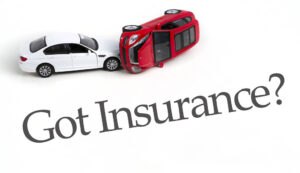There is a noticeable difference from one state to another with regards to car insurance requirements as most of the states prescribe liability, and uninsured/underinsured motorist coverage as essential requirements. Besides, many insurers normally also offer optional policies such as payment for collision or comprehensive damage regardless of which party is to blame for the accident.
Some states, among them New York, require all drivers to have Personal Injury Protection (PIP). PIP pays for medical bills and lost wages due to work on account of an accident regardless of who caused the accident. On the other hand, to cover bodily injuries and property damage claims, Texas has minimum limits set at 30/60/25.
Minimum Coverage
In most states, the law clearly defines some level of insurance that the drivers have to maintain while driving on the roads. It is usually liability coverage like the damage inflicted to persons and their vehicles along with uninsured/underinsured motorist coverage. Other optional forms of coverage such as PIP may also be required in some states. For instance, in New York, $25,000 per person with a maximum of $50K per accident for bodily injury liability is required as well as $10,000 worth of property damage liability per driver This works alongside $50,000 PIP coverage minimum per accident. The fine and other penalties for being caught driving without an insurance include losing one’s license, paying fines and being suspended from driving.
In terms of practical advice, insurance professionals will often advise clients to get higher limits on the policies they purchase, than the minimum required by law, while at least getting a good plan is better than nothing when it comes to getting in an auto accident, as noted even a basic plan is more helpful in managing risk. To illustrate, let us assume that a driver gets into an auto accident and has insurance covering $10,000 worth of property damage liability, this amount will likely be insufficient if there is damage to another person’s luxury vehicle caused by the driver.
No matter the minimum car insurance requirements in your state, most insurers offer additional coverage that can enhance or increase policy limits or add other benefits. If you need help figuring out which or how much car insurance policy best meets your needs, reach out to an agent and discuss them. It is also wise to regularly review state regulations since these can change. Liability Coverage
To be able to get it, some level of liability insurance is needed, and it is true with almost every state, required to be able to protect the drivers from the injuries that they might inflict to other drivers, as well as Injuries on the road to other drivers and cars. Personal injury protection (PIP) as well as uninsured/underinsured motorist coverage are also some of the forms that cover injuries states can also require some people.
Liability coverage provides the following – Usually this is required by $15,000 as the lowest limits in each state for one person in the event of a bodily injury, $30,000 if multiple people have suffered injuries, and $5,000 if there is a claim in property damage. Nonetheless, come to think of it, you can increase these limits, however, it will be expensive and raises the premiums, which is most likely detrimental for you.
Some states also require PIP coverage or rather medical payment, but this sort of coverage does not exist everywhere and it could potentially save you quite a lot in the event an extended hospitalization or an expensive surgery is needed.
Let’s put it differently, we all know that Collision and comprehensive coverage are said to be optional coverages, but these cover more than what is covered through liability policies. For instance, collision covers the loss suffered by a motorist whose car collides with another vehicle regardless of the insured’s fault and is commonly available in all states except New York. Comprehensive insurance covers loss caused by unforeseen events such as storms whereas collision insurance covers repair or replacement of the car due to it hitting another vehicle due to any reason.
Coverage for Uninsured and Underinsured Motorist
While minimum liability coverage requirements are enforced by most states, some also enforce uninsured and under-insured motorist coverage. This coverage that combines with medical payments and Personal Injury Protection assists quite a lot to many people who would have been otherwise underpaid by the policy makers, in case they got injured by someone without proper coverage.
This type of insurance law that is mandatory to the majority of the people is too enforced in a lot of states. The procedure of the mandating states requires the motorists to submit proof of the coverage when they are pulled over by police. In fulfilling and enforcing that coverage, several departments of motor vehicles cooperate with insurers.
Car insurance in New York offers basic protection against personal injury protection ($50,000 maximum for hurt by an uninsured motorist and/or hit and runaway driver PIP), bodily injury liability ($25,000 per individual/ $50,000 in total per accident) coverage, and property damage liability coverage limit of $10,000.
Also, think about getting uninsured/underinsured motorist (UM/UIM) coverage. It is worth noting that as of 2022, 14.0 percent of drivers underwent this problem of having — in the USA alone — facing a driver who did not have insurance. Coverage for yourself, family members who drive your vehicle, and passengers in your house and in the vehicles being driven by someone who is under insured or not insured are taken care of by this policy. Consider getting a limit policy that is higher than what your state requires for this capsule insurance. It would be a little steep to sustain initially however over time it would save you lots of expenses.
Collision Coverage
No state requires the purchase of collision coverage, yet the majority of drivers include it in their policy. If a person has crashed into you and then they are the reason that you claim insurance it will cover you — this is because collision insurance pays out no matter the cause — including hailstorms, or vandalism. Other times, leasing or financing companies actually require this type of insurance coverage as part of the financing agreement.
Your insurance policy has set maximum limits regarding bodily injury and property damage stated by the law of the state in which you are insured. When choosing these limits, think of those amounts in light of personal requirements and how much they would be paid if an accident happened including the medical expenses, and even lost income.
Despite differences in procedures, in most instances the insurer’s agent employs the application and assessment of the person’s driving record and history in order to determine whether to extend coverage or consider the risk too great. Other states have provisions on how drivers are underwritten in order to protect them from fraud or bias policies.
The price you pay in premiums for auto insurance is influenced by several factors such as the value of the car and your area. The cost of these policies tends to be higher in big cities because there is more traffic which increases the chances of accidents occurring or the theft of their cars taking into consideration the value of the car since repairing a luxury brand or high performance vehicle is expensive.




